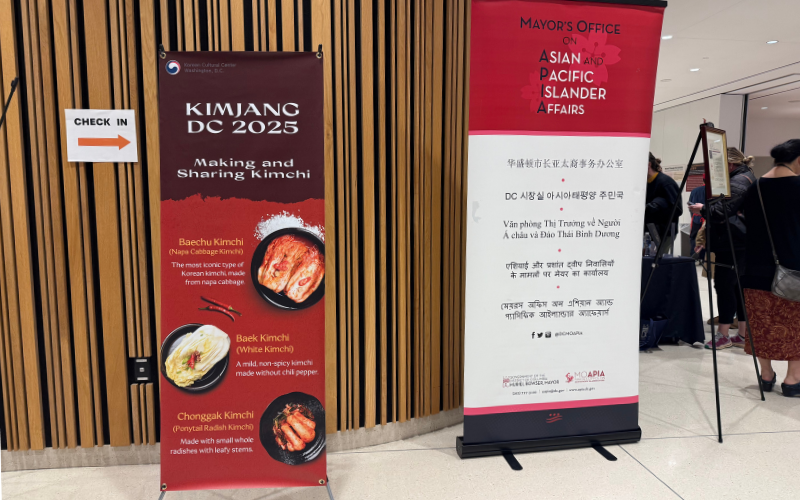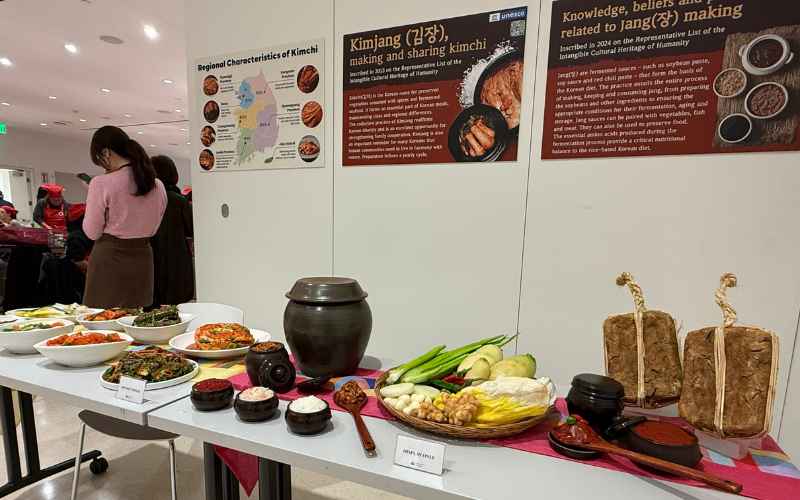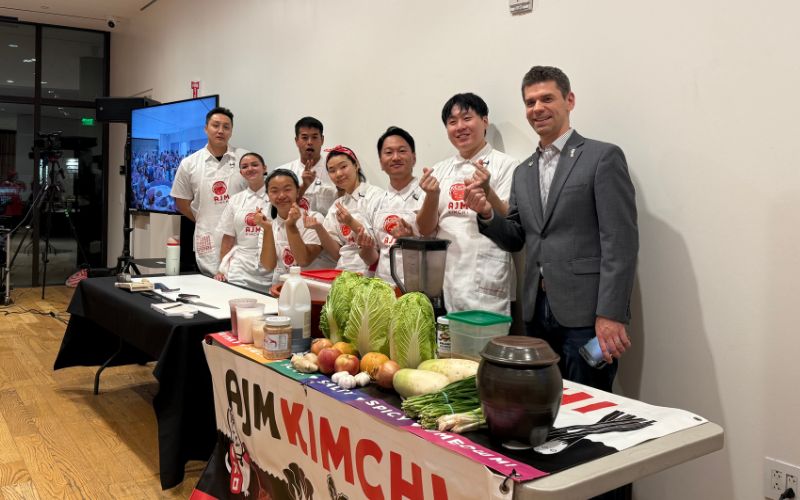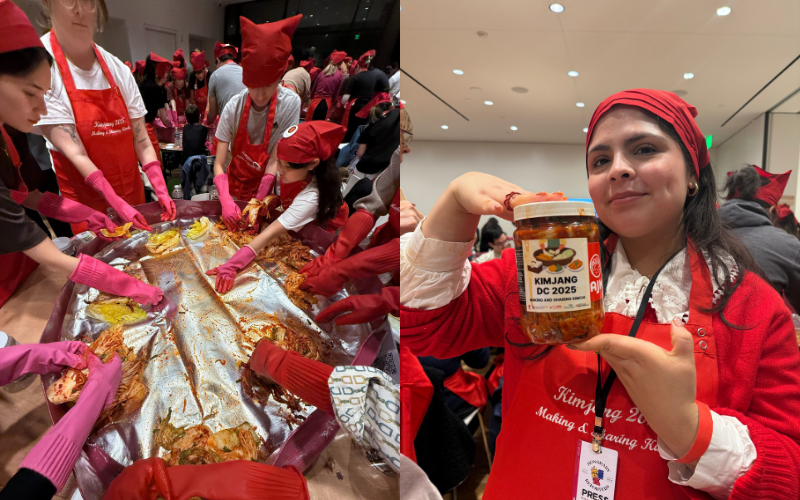On Monday, November 17, Washington, DC marked Kimjang 2025 with a lively gathering at the Martin Luther King Jr. Memorial Library. Dozens of residents came together not only to make kimchi, but to take part in a tradition that embodies community, cooperation, and the preservation of Korean cultural heritage.
Held on the library’s fifth floor in the heart of Chinatown, the event was organized by the Korean Cultural Center DC in partnership with the DC Mayor’s Office on Asian and Pacific Islander Affairs (MOAPIA). Attendees celebrated Kimchi Day, learned about the history and meaning of kimjang, and explored the many ways Koreans use different ingredients to create their own distinctive styles of kimchi.


Upon checking in, participants were given chef hats, aprons, and gloves—each branded with the event’s name. For someone experiencing kimjang for the first time, it felt exciting, a signal that what we were about to do was more than simply making kimchi. Each table was set up for about eight to ten people, with a large bowl of the seasoning mixture placed at the center, ready to be spread onto our cabbages. The room was filled with an unmistakable aroma—spicy, rich, and layered with the distinct scents of Korean spices.

After a brief orientation, the event continued with a meaningful demonstration on how to make kimchi from scratch, led by Chef Ellen Lee and her team. She also shared a bit of her personal story and how she decided to become a chef with the goal of sharing Korean cuisine with the world. During the demonstration, she emphasized that making kimchi—and the kimjang tradition itself—is all about “sharing with love” and that “it’s always warm,” because it brings a little piece of home to the table.

After the demonstration, everyone rolled up their sleeves and got to work. We laid out our cabbages on the tables and began scooping the seasoning mixture from the center to spread onto our vegetables. Laughter and friendly conversation filled the room throughout the process, and working alongside strangers made the essence of kimjang even more tangible. One unique aspect of our batch was the addition of fruits, such as pears and apples, personally selected by Chef Ellen to add sweetness and aid in fermentation.
Once the preparation was complete, plates of rice were distributed so we could taste the kimchi we had just made. The combination of flavors—the spicy, the sweet, and the tangy—made each bite feel warm and comforting, a true reflection of the tradition’s spirit of sharing.
By the end of the event, it was clear that Kimjang is much more than a cooking activity—it is a celebration of community, heritage, and connection. Sharing the work, the flavors, and even the laughter with fellow participants brought a sense of warmth that extended beyond the library walls. For first-timers like myself, the experience offered not only a hands-on introduction to Korean cuisine but also a glimpse into a tradition that continues to bring families and communities together, one cabbage at a time.

How about this article?
- Like1
- Support1
- Amazing1
- Sad0
- Curious0
- Insightful0


